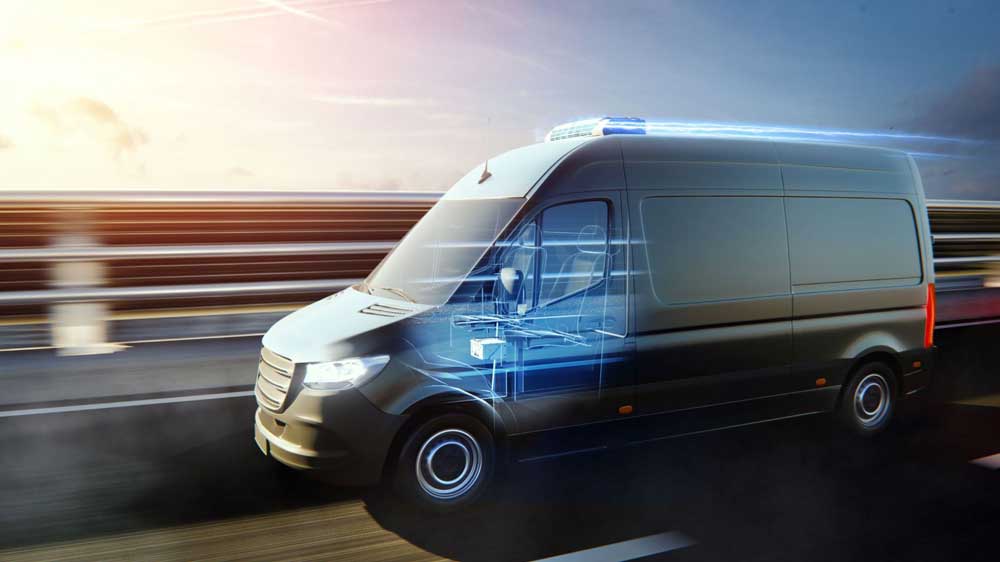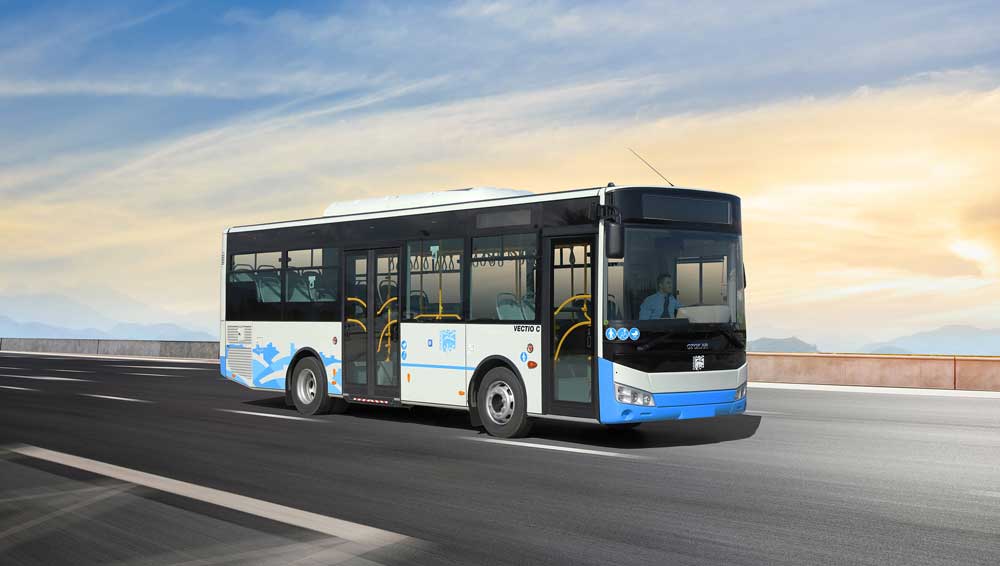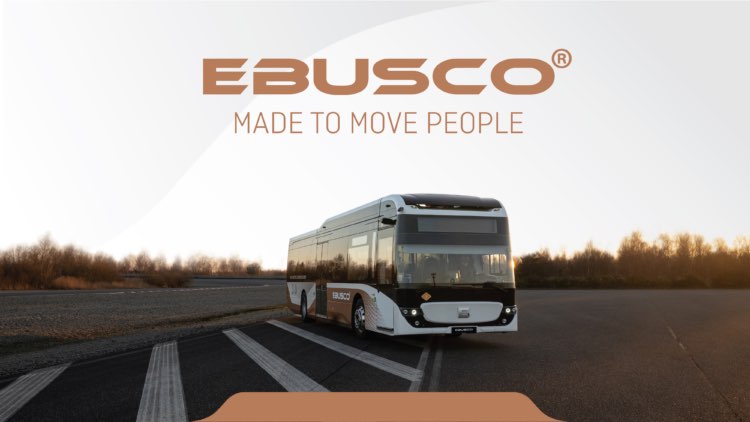A player for 120 years in the light commercial vehicle (LCV) market, Renault today ranks as the leading van brand in Europe (excluding pick-ups), with a 16.7% share of the market in first-half 2019.
Groupe Renault is also a pioneer and the European leader in electric LCVs, with a 41.5% market share, mainly with its best-seller, Kangoo Z.E.. After launching its fourth electric LCV, Master Z.E., in 2018, Groupe Renault plans to electrify its entire van range by 2022.
Outside Europe, Renault is stepping up its presence in China, with RBJAC (Renault Brilliance Jinbei Automotive Company), in South Korea, with the launch of Renault Master, and in Latin America, where it holds a 16.9% share of the market and has launched a new Kangoo model.
Drawing on its experience and leadership, and attentive to the market, Groupe Renault is rounding out its LCV range with MASTER Z.E. Hydrogen and KANGOO Z.E. Hydrogen.
The vehicles will be equipped with a range-extender fuel cell providing electric and thermal power of 10 kW, increasing the range of MASTER Z.E. Hydrogen and KANGOO Z.E. Hydrogen to over 350 km (compared with a previous 120 km and 230 km WLTP, respectively, for the 100% electric battery versions). This is the best range in the electric van and small-van category. Another advantage of hydrogen is that charging takes just five to ten minutes.

Renault proposes to optimize the use of its electric light commercial vehicles (LCVs) with hydrogen by removing range-linked obstacles. Hydrogen responds to the requirements of professionals yet to be fulfilled by electric vehicles, notably for their long-distance travel needs. Groupe Renault’s hydrogen technology was developed in partnership with Symbio, a Groupe Michelin subsidiary.
The group will be launching Renault KANGOO Z.E. Hydrogen at the end of 2019 and Renault MASTER Z.E. in mid-2020.
Denis Le Vot, Alliance SVP, Renault-Nissan LCV Business Unit: “Groupe Renault completes its range of electric light commercial vehicles with the launch of Renault MASTER Z.E. Hydrogen and Renault KANGOO Z.E. Hydrogen. These vehicles provide professionals with all the range they require for their long-distance journeys as well as record charging times. And the advantages do not stop there, as Renault MASTER Z.E. Hydrogen and Renault KANGOO Z.E. Hydrogen can run on decarbonized energy that respects the environment while offering all the comfort of electric driving.”
Hydrogen a natural fit with Groupe Renault strategy
As announced in the Drive The Future Strategic Plan (2017-2022), Groupe Renault’s vision is to provide sustainable and broadly affordable mobility complying with current and future standards. By sharing R&D investments and technologies within the Alliance, Groupe Renault is supporting market developments with an extensive range of electric motors, hybrid power trains, and new- generation petrol and diesel engines offering greater driving pleasure and power and featuring cutting-edge pollution-control technologies.

A pioneer in affordable electric vehicles, Groupe Renault intends to maintain its role as a forerunner in Europe and make headway in new markets, including China, the world’s number-one electric vehicle market, with Renault City K-ZE. Groupe Renault plans to propose eight 100% electric models. New ZOE is now equipped with the new WLTP-certified Renault R135 electric motor and a new battery with a range of 395 km WLTP.
To make the electric experience widely available to the population as a whole, 12 models will be electrified by the end of the plan in 2022. Two technologies have been launched: full hybrid (E- TECH) and full plug-in hybrid (E-Tech Plug-in). By 2020, three Renault models will be available in hybrid: New Clio (HEV), New Captur (PHEV) and New Mégane (PHEV).
While on-board hydrogen is not yet broadly accessible and produced on a decarbonized basis, it is being developed in addition to battery-only applications for captive company fleets, intensive use and LCVs. In Europe, 125 stations are available, in France, 26 stations are currently open and 100 are planned to open by 2020. Infrastructures with increasingly decarbonized hydrogen are developing to support the development of this energy. Given the substantial financial investments required (nearly €1 million per charging station), governments are stepping up support and economic aid through plans addressing mobility, transport flows and professional transport, as well as the decarbonization of the hydrogen industry and the storage, in the long term, of renewable energies.

With the arrival of MASTER Z.E. Hydrogen and KANGOO Z.E. Hydrogen in the Renault distribution network, the group is making three key steps forward:
▪ Sales in the Renault catalog for fleet managers: the vehicles can now be bought, serviced and used just like other light commercial vehicles.
▪ The recognition of hydrogen mobility as an ideal range extender supplementing the electric vehicle range.
▪ The accelerated development of electromobility consistent with national and international objectives on the fight against global warming and pollution.
Renault and Symbio, making mobility progress together since 2014
Groupe Renault initiated trials in 2014 as part of a partnership with Symbio, a Groupe Michelin subsidiary specialized in hydrogen fuel cells that can be fitted on electric vehicles or other forms of transport (including buses, trains, etc).
Over 200 Kangoo Z.E. models (equipped with the 22 kWh battery) were fitted with the hydrogen fuel cell range-extender solutions. KANGOO Z.E. Hydrogen thus became the very first hydrogen LCV in Europe.

In parallel, the partners of the Alliance worked together on fuel cell technology, while the R&D activities converged to optimize investments and the complementarity of expertise.
The work served to substantially improve performance, reduce the costs of the technology, and obtain concrete and conclusive proof of the use of hydrogen in dedicated captive fleets. Following the announcement of these encouraging results, Groupe Renault initiated the project to launch KANGOO Z.E. Hydrogen as part of its renewal in mid-2017. Kangoo Z.E. was fitted with a new 33 kWh battery, a new motor, and a new charger, together with a heat pump for heating and cooling the cabin that consumes less electricity. Master Z.E. has been equipped with the same battery and a drive train adapted to its weight.
MASTER Z.E. Hydrogen and KANGOO Z.E. Hydrogen benefit from the experience acquired and the complementary fit of the new electric motor/battery system with an upgraded Symbio hydrogen fuel cell.
Hydrogen as an ideal supplement to electric vehicles
First things first, how does hydrogen work?
The hydrogen is stored in a high-pressure tank. On Kangoo: 74 liters / 1.7 kg / 350 bar (or 700 bar depending on the country); on Master: 2 tanks of 56 liters / 2.1 kg / 700 bar each.
The fuel cell converts hydrogen and oxygen from the air into water, creating an electric current. The battery and the hydrogen cell supply electric energy to the motor.

The fuel cell activates automatically (and can also be activated by the driver) when the electric battery charge level is at 80%, to maintain or gradually charge the battery (during downtimes when driving). If the battery charge is under 2%, the vehicle can run on hydrogen alone (for example, for reaching at low speed the final destination in the vehicle parking area).
Hydrogen charging supplements battery charging and extends the electric power range. If the electric battery is completely discharged, the hydrogen cell can charge it and serve as a charging station.
Weather conditions have little impact on the hydrogen power range as the energy stored is not affected by the air temperature, meaning that range is not diminished in cold weather.
Users can charge the battery alone when they have the opportunity and not necessarily when the battery is discharged (with the hydrogen supplying the necessary power pending the battery charge).
The vehicle cabin is equipped with an additional display showing the operation of the fuel cell, cabin heating, the hydrogen gauge, the hydrogen level, and remaining range.
On average, a hydrogen charge currently costs €15 per kilo.
▪ Up to 3 times more range than 100% electric vehicles
With hydrogen, drivers can cover longer distances. Equipped with hydrogen power, MASTER Z.E. Hydrogen and KANGOO Z.E. Hydrogen have the largest range of electric vans and small vans on the market.
Renault MASTER Z.E. Hydrogen: 350 km (vs 120 km for Master Z.E.) Renault KANGOO Z.E. Hydrogen: 370 km (vs 230 km WLTP for Kangoo Z.E.)

▪ Rapid charging: filled up in 10 minutes tops
After a five-minute hydrogen charge, the vehicle gains an extra 150 km of range. A complete hydrogen charge takes from five to ten minutes.
Two charging standards exist in France: 350 bar and 700 bar.
– KANGOO Z.E. Hydrogen is equipped with a 10 kW hydrogen cell (5 kW electric and 5 kW thermal), for an additional 29.7 kWh (maximum) on top of the 30 kWh battery of Kangoo Z.E. A dual offering of a 350 bar and 700 bar tank is available.
– MASTER Z.E. Hydrogen is equipped with a 10 kW hydrogen cell (5 kW electric and 5 kW thermal) which provides 56 kWh in addition to a Master Z.E. 33 kWh battery and a charging offer of 700 bar.
▪ More sustainable and silent vehicles (70 db)
Hydrogen today is mainly produced from natural gas. Converting hydrogen to electricity on-board is totally clean and releases only water. The vehicle can thus access zero-emission areas in city centers.
The production of decarbonated hydrogen is growing to ensure the transition from carbonized hydrogen to decarbonized hydrogen (the industry of electrolysis using electricity produced via renewable sources).
▪ Qualifying for aid for hydrogen vehicle purchases
The existence of “hydrogen ecosystems” depends on the energy strategies of countries and regions.
– Europe is strongly supporting the development of hydrogen mobility through projects such as EAS’HyMob and Hydrogen Mobility Europe. In the Netherlands, Rotterdam City Hall is encouraging the purchase of hydrogen vehicles. In the UK, the Plug-in Van grant provides for £8,000 per hydrogen vehicle. In Germany, 1,000 stations are to be installed between now and 2030.
– In France, at national level, the French Environment and Energy Management Agency, ADEME, finances hydrogen projects to the tune of around €16,000 for the purchase of a hydrogen vehicle as part of a global hydrogen supply/vehicle/operation arrangement.
– In the Rhône-Alpes, Normandy and Ile-de-France regions, additional aid is available from local authorities.
– In Asia, China is targeting one million hydrogen vehicles by 2030. South Korea is targeting 80,000 vehicles and 2,000 buses by 2022 and Japan 800,000 vehicles and 1,200 buses by 2030.
– The objective in California is for 1,000 hydrogen stations and one million hydrogen vehicles by 2030.

▪ Certified vehicles
Groupe Renault is uncompromising on safety. Any potential risk relating to hydrogen has been reduced through adapted technical solutions. MASTER Z.E. Hydrogen and KANGOO Z.E. Hydrogen have both obtained European certification delivered in compliance with Regulation (EC) No. 79/2009 of January 14, 2009 on hydrogen vehicles. In the event that the fuel cell overcharges or overheats, the hydrogen is decompressed and dispersed in under a minute.
▪ Designed for tomorrow’s cities
The additional energy provided by hydrogen storage and the fuel cell enables professionals to carry out more urban and extra-urban assignments. Adapted to the uses of professionals, MASTER Z.E. Hydrogen and KANGOO Z.E. Hydrogen offer complete peace of mind as they reduce the risk of running out of energy through the combination of the ZE battery and the hydrogen range extender.
Professionals can thus complete long-distance journeys with no constraints in large urban areas and up to the periphery of cities, while emitting zero CO2. Authorized in city centers, and even in low-emissions areas, hydrogen LCVs are ideal for business activities including:
– Transport and logistics
– Urban deliveries and multi-technical services such as breakdown assistance and maintenance
– Municipal and local authority services
– Express and special mail.
▪ And easy maintenance
The hydrogen system needs to be serviced every two years by garages certified by Symbio. The services concern the following points:
– The hydrogen circuit (as required by regulation)
– The correct operation of the hydrogen kit
– Check and adjustment of the level and physical-chemical characteristics of the coolant of the range extender
– Replacement of the deionization filter and Symbio liquid
– Check, cleaning and replacement of the air filter
– Update of Semmod software.
Renault MASTER Z.E. Hydrogen
After launching New Master in September 2019, Renault is now bringing professionals a hydrogen version of Master Z.E.. Launched in first-half 2020, Renault MASTER Z.E. Hydrogen will triple the range of Master Z.E. from 120 km to 350 km (WLTP certification under way).
Equipped with two hydrogen tanks located under the car body, the vehicle will gain in versatility with no compromises on the load volume from 10,8 m3 to 20 m3, with a reasonable additional weight of 200 kg.
MASTER Z.E. Hydrogen will be available in two lengths and two heights, and in two van versions and two chassis cab versions.

Batilly plant (France)
The Batilly plant has 2,700 employees, 10% of them women. It is the leading private employer in the Meurthe-et-Moselle department. The plant has proceeded with 370 new hires in the last four years, including 109 apprentices.
The plant manufactures Renault Master, Opel/Vauxhall Movano and Nissan NV400, producing 715
LCVs a day. It is one of Renault’s three LCV production sites in France (33% of total LCV volume) and one of Renault’s six vehicle assembly sites in France (19% of volume). In all, the plant has produced over 2.7 million vehicles since its creation in 1980.
Since 2010, the Batilly plant has focused on the production of Renault Master and its numerous versions, including Master Z.E.. The hydrogen technology on MASTER Z.E. Hydrogen will be fitted by PVI, a Groupe Renault subsidiary.
Renault KANGOO Z.E. Hydrogen
Set for launch in late 2019, Renault KANGOO Z.E. Hydrogen will boast the best real-life range of any electric van on the market at 370 km (WLTP certification under way).
KANGOO Z.E. Hydrogen will thus be increased from 230 km to 370 km, thanks to the hydrogen fuel cell system, bringing professionals peace of mind for their extra-urban journeys.
In cold weather, the hydrogen fuel cell, which emits heat, will serve to heat the cabin with no loss in range. The heat produced is reused in the cabin heating system and helps to maintain the battery temperature and improve battery performance in winter. With the limits of the heat pump coming at -5°C to -10°C, the hydrogen fuel cell and its 5 kW of thermal power provide cabin heat even in extreme cold.
With a loading area volume of 3.9 m3, despite a reasonable additional weight of 110 kg, this vehicle will be available in France at €48,300 ex. VAT (including the battery purchase and not including government aid and other zero-emission bonuses).

Maubeuge plant (France)
The Maubeuge plant has produced over 1.5 million Renault Kangoo and Mercedes Citan since the launch of the current generation in late 2007. The Maubeuge plant will produce new-generation Renault Kangoo, expected in 2020, including the electric versions. Groupe Renault is investing €450 million over five years for the production of Kangoo and is recruiting 200 employees in 2019 to support the development of this activity.
The group selected Renault Tech, based at the Heudebouville site in Normandy, to install the hydrogen technology (fuel cell and tank) on KANGOO Z.E. Hydrogen, after it comes off the production line and before it enters the supply chain to the Renault network for delivery to end customers.
Founded in 2009 to respond to the specific needs of fleet customers, Renault Tech is Groupe Renault’s integrated coachbuilder. The business unit designs, produces and sells converted vehicles of the very highest quality in 48 hours.










